This is Uganda- The Pearl of Africa, Part 2, the part where we visit Lake Bunyonyi! Read about the first part of our trip to Uganda here, and check out photos from the trip here.

Travel to Uganda’s Lake Bunyonyi
Our guide, Lucas, from Moses Tours picked us up from the Lake Victoria View Guest House and we set off for Lake Bunyonyi, which means the “Place of Many Birds” because of its 200+ bird species! Lake Bunyonyi is a popular stopover en route to gorilla tracking at Bwindi Impenetrable Park, and it is a great place to relax a bit before that transformative experience.
Schistosomiasis
Aside- Schistosomiasis is a parasitic disease endemic to most areas in Africa, and Uganda is no exception. AKA bilharzia, snail fever, and swimmer’s itch. This disease is caused by a rather nasty parasite whose favorite host is a certain type of freshwater snail. The free-swimming larval form of the worm (cercaria) penetrates the skin of the human (usually of the foot), causing a rash at the point of entry, then wreaks havoc on the body. This little buggar is the reason you should not swim in fresh water in Africa! There is reportedly no schistosoma in Lake Bunyonyi because the lake is at high altitude, but we didn’t take any chances.
Crossing the Equator and Beyond
We stopped in Kayabwe at a Ugandan tourist trap on the equator. There are shops and a little cafe, and a little monument set up on the equator. For a nominal fee, a guy will demonstrate the Coriolis effect. Water drains clockwise in the Southern Hemisphere, counterclockwise in the Northern Hemisphere, and straight down on the equator.
We drove down red clay roads through rolling green hills, past villages populated by people dressed in vibrant colors. Women carried all manner of things on their heads, and schoolchildren played and ran around in their uniforms. Roadside markets displayed colorful fruits, and food stands smoked and wafted delicious scents of cooking meat. We stopped for goat on a stick and grilled sweet plantains known as gonja.
Mbarara
We stopped by Moses Tour’s office in Mbarara, the largest city we had seen so far. I’ll talk more about Mbarara in a later post about Uganda (The Pearl of Africa). Here, we had our first taste of Ugandan food. The flavors are very mild and the meals very starch-forward. Matoke is also known as the East African Highland banana, and it was the favorite food of every Ugandan person we asked! This could be because “matoke” is also used as a general term for food, but I don’t think so! Uganda has the highest per capita consumption of bananas of anywhere in the world. The average Ugandan eats 1.5 pounds of bananas per day! It was served with every meal. Uganda is the second largest producer of bananas in the world, but most of the bananas they grow are consumed in country.
Our lunch consisted of Matoke, cassava, Irish potatoes, rice, and chicken. Matoke is not sweet like the bananas we are used to. It reminded us of plain mashed potatoes and didn’t have much of a taste at all. A popular condiment in Ugandan cuisine is “G-nut sauce,” which is a purplish peanut sauce. They call peanuts G-nuts, since they grow in the ground… makes sense.
Back on the Road
The rolling hills gave way to verdant mountains blanketed in hundreds of shades of green and terraced gardens. Banana crops gave way to onions and Irish potatoes. It was a beautiful, if exhausting, drive. The drive itself was 7-8 hours, a bit longer with all the stops we made.
Birdnest Resort
We stopped at Arcadia Cottages to take in the panoramic view of the spectacular lake, with its 29 islands. It was breathtaking and vast! Then, we continued on to our hotel, the Birdnest Resort. Two “lawnmowers” (donkeys) and an armed guard greeted us. The resort lobby was open to the lake, and there was a pool table and an outdoor swimming pool between the two. We stayed in a deluxe room with a balcony overlooking the lake. The hotel can arrange activities for you and has canoes for overnight guests to use.
The hotel has nightly bonfires and a gourmet restaurant with a decent selection of food and drink. Vuong had chicken masala and I had coconut fish, both delicious! The resort dog, Pacino, kept us company while we ate. We enjoyed fireside conversation with an Indian family and a Kenyan family living in Rwanda. We were very happy with our stay here and I highly recommend it!
Exploring the Lake
We set off on foot to explore the area near the hotel. On the road to the village, we were greeted by several groups of children who said “hello, give me money.” They literally said this… I’m guessing their parents taught them to use this phrase on any muzungus they might encounter! Other kids we encountered offered to sell us bean sprouts but wouldn’t give us a price.
Aside- my pre-trip reading advised against giving the kids money or candy. The latter, because dental care is scarce and cavities common. Instead, we brought soccer and basketballs. We gave these kids a soccer ball and they were over the moon about it!
The Market
We turned a corner and were in the midst of a massive market. This felt like normal daily life in the village. The market sold mainly potatoes, second hand clothing, and household goods. Not another muzungu in sight! It was a very authentic experience but, to be honest, we did not feel the love. The faces were not smiling, but instead gave us wary glances and apathetic stares.
At last, we saw a very friendly face- that of Captain Jack! He and his buddy, Sunday, accosted us. These good-natured hustlers offered boat rides around the lake and visits to the significant islands in that lake. Jack and Sunday took us back to their tourism office, a thatch-roofed shack filled with souvenirs and colorful fabrics, where we negotiated a price and planned our tour for the next morning.
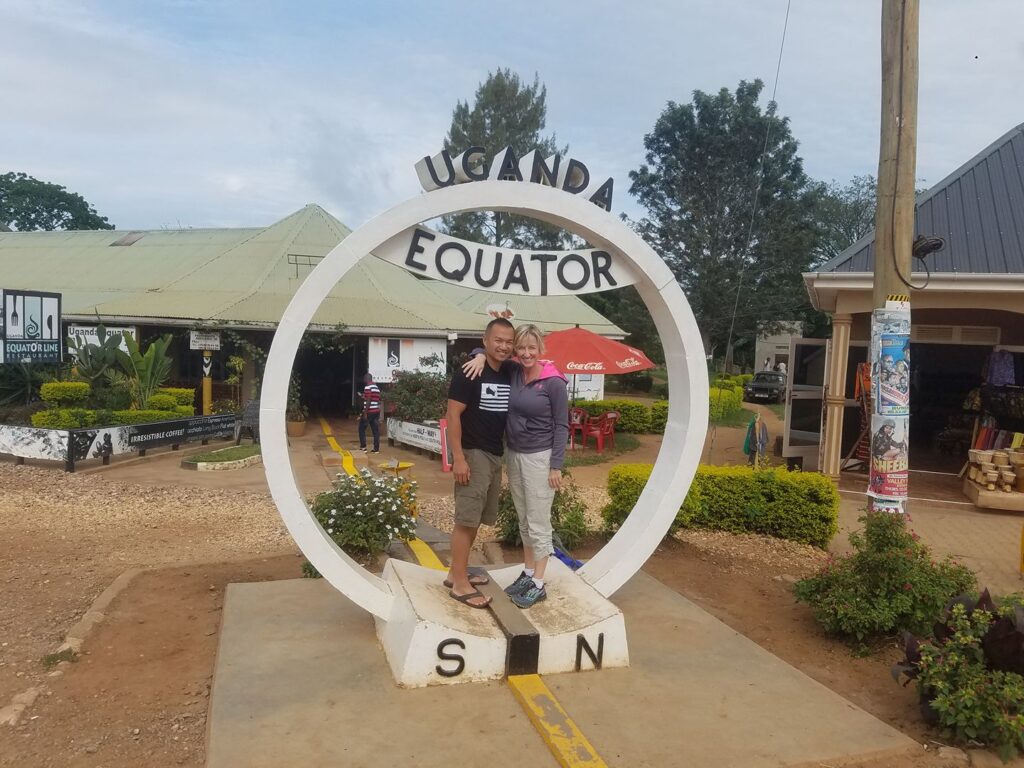

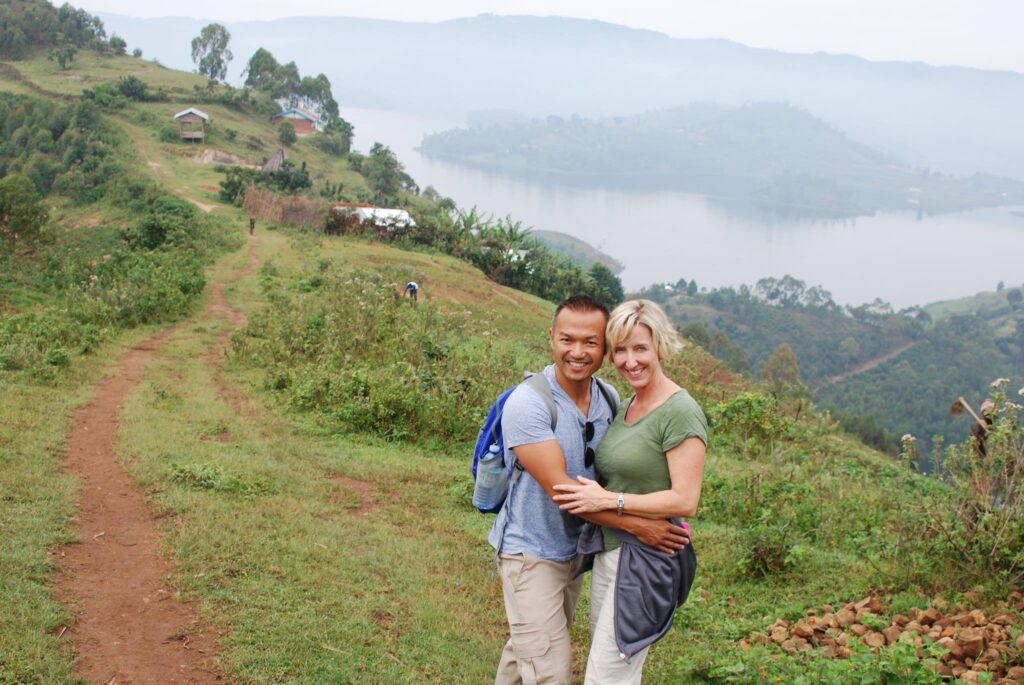

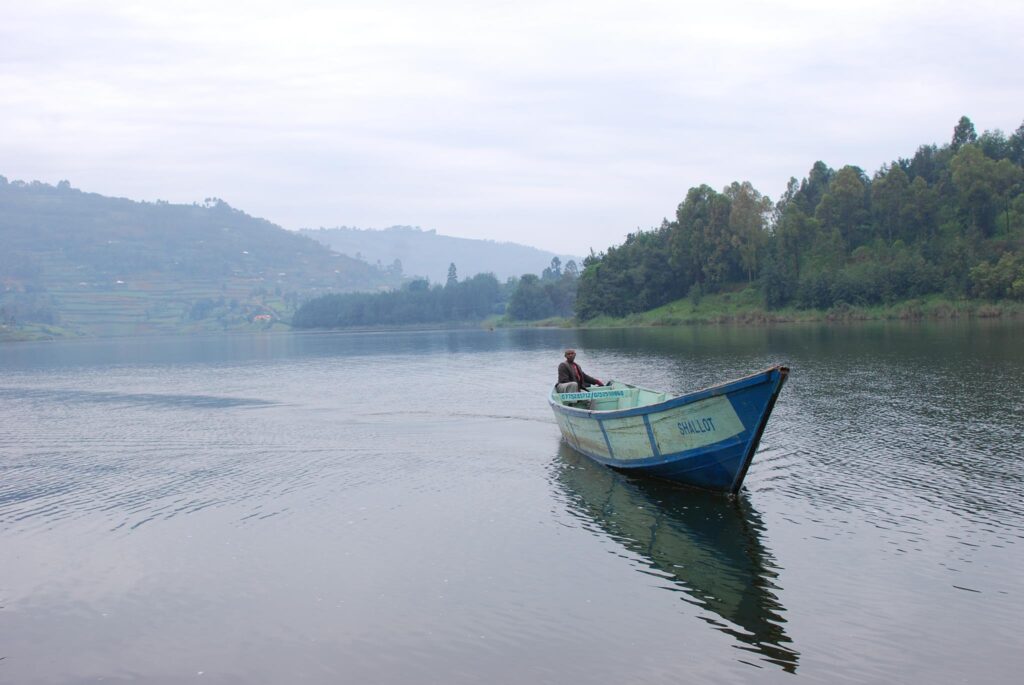

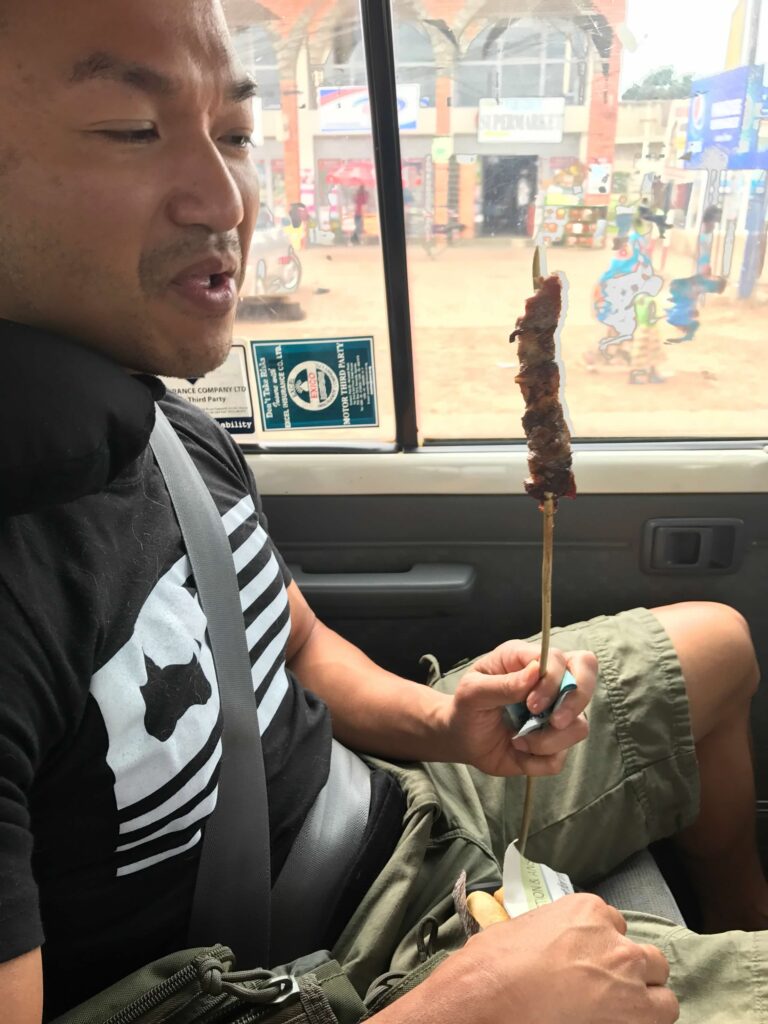

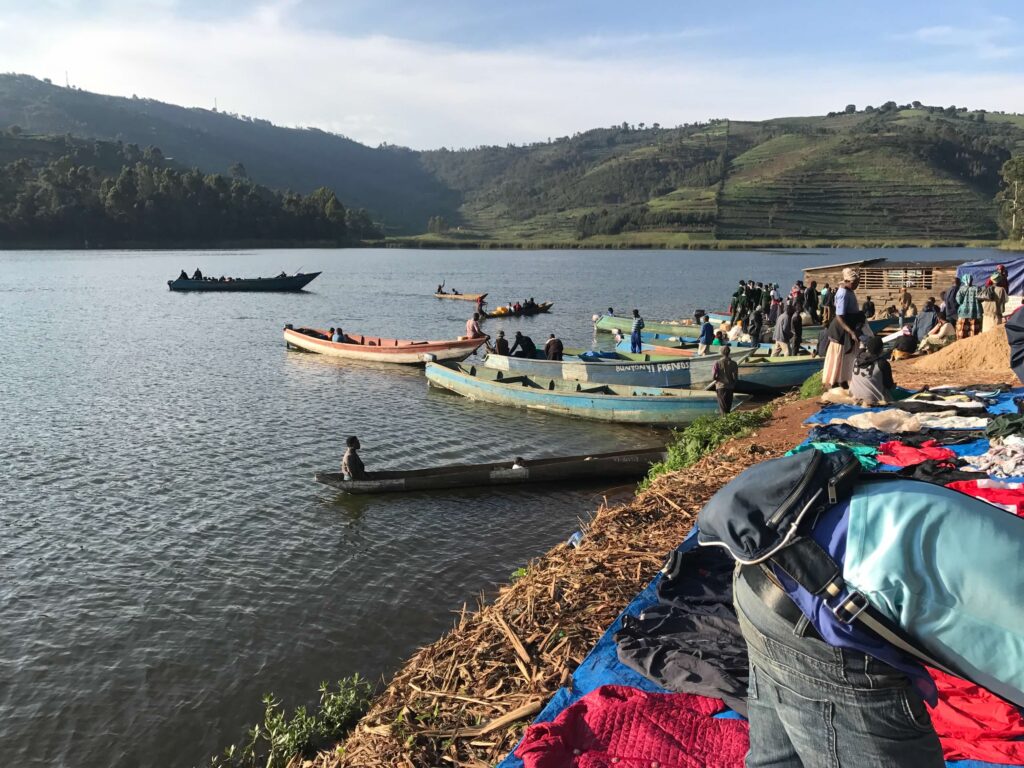

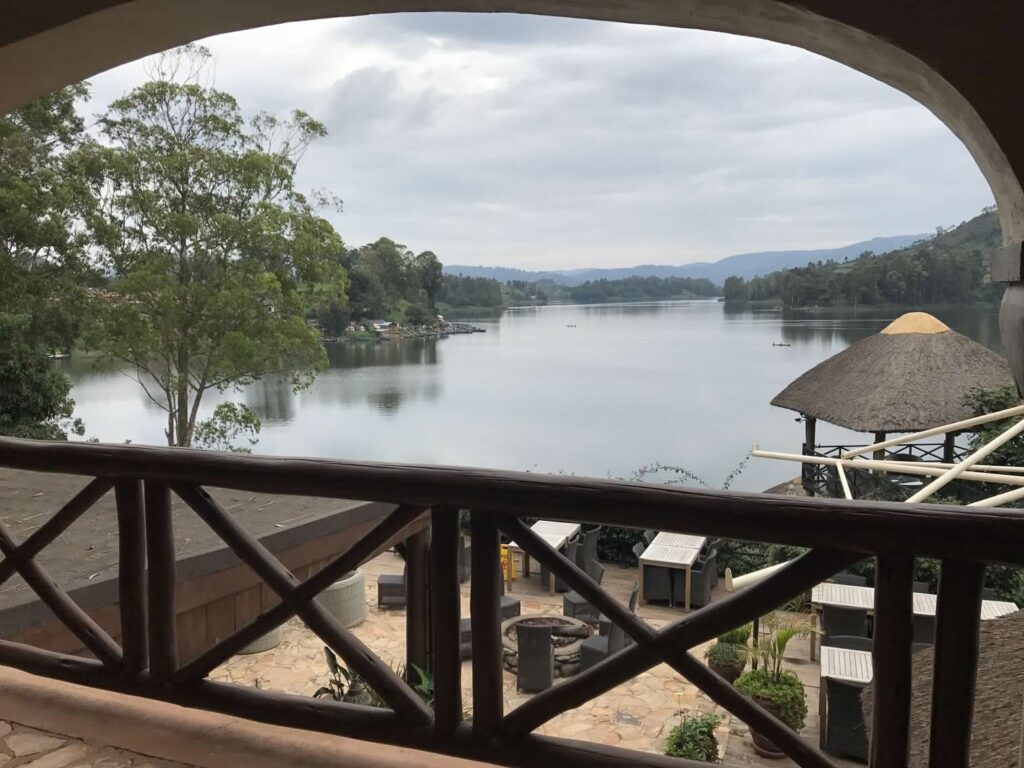

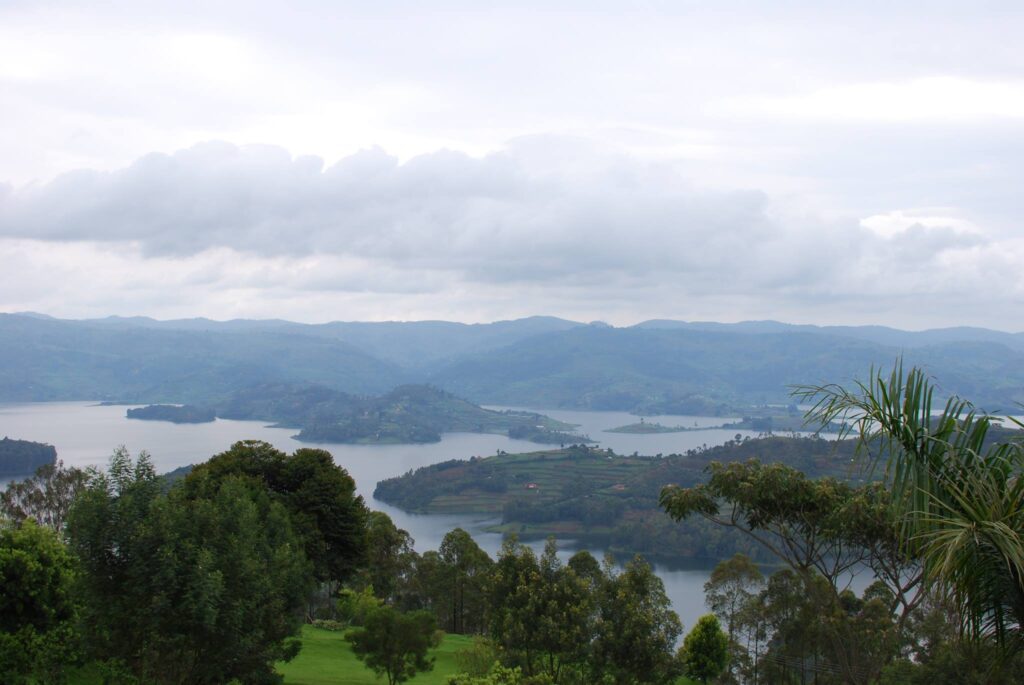

Boat Tour of Lake Bunyonyi
Captain Jack picked us up at the Birdnest pier after breakfast in a large blue canoe. Our first stop was a hilly peninsula where Kacwamba Orphanage is located.
We immediately began a very steep climb. Luckily, we wore our hiking boots… Captain Jack snickered at this, wearing his flip flops and practically running up the hill. We passed children with large water jugs on their heads and barefoot women with hoes working the gardens.
Along the way, we visited a grocery store where we were greeted by a Rastafarian-looking man with a scraggly beard, muddy sclera, and a very serious demeanor. He sat at a short table with two other men, drinking their morning porridge from a communal bowl. They invited us to sit with them and share their breakfast. Sometimes you have to put concerns about certain things aside and embrace an experience. Normally I wouldn’t share a drink or bowl with anyone, but to refuse would have been an insult and we wanted to be open to this experience.
Sorghum is a dietary staple in Uganda, and is used to make a popular drink called bushera. It can be fermented to an alcoholic drink called amamera. Read more than you ever knew you needed to know about these drinks here. I can tell you that the version we had was amamera! This drink was lavender/brown in color and contained sorghum floaters. It tasted like strongly alcoholic, sour goat’s milk. We sat talking politics (well, we mostly listened) with these men for a while, then the Rastafarian man took us to the orphanage.
Kacwamba Orphanage
At the time of our visit, the common area of the orphanage was a 3-room hut with comfy couches filled with little children in dirty, tattered clothing. We entered and greeted the proprietress, then were immersed in song and dance. The children and adults started singing and dancing. They took our hands (and our hearts) and we bounced up and down with them. It was an immersive, heart-wrenching experience! We gave a small donation and, if you have a few bucks you would like to part with, check out their website: https://www.kacwamba.org/
The population of Uganda (the Pearl of Africa) is very young and the number of orphans quite high, partially due to HIV/AIDS related deaths, and partially due to the violence seen here in recent history, including the reign of Idi Amin (the Butcher of Uganda) and the terrors brought by Joseph Kony’s “Lord’s Resistance Army.” Check out the books I read to learn more about the history of this place. Particularly poignant are Sewing Hope (Sister Rosemary Nirumbe’s story) and The Teeth Smile but the Heart Does Not Forget.
We continued hiking for a while, up hills and across grassy meadows with gorgeous views of the lake, eventually heading back to the boat.
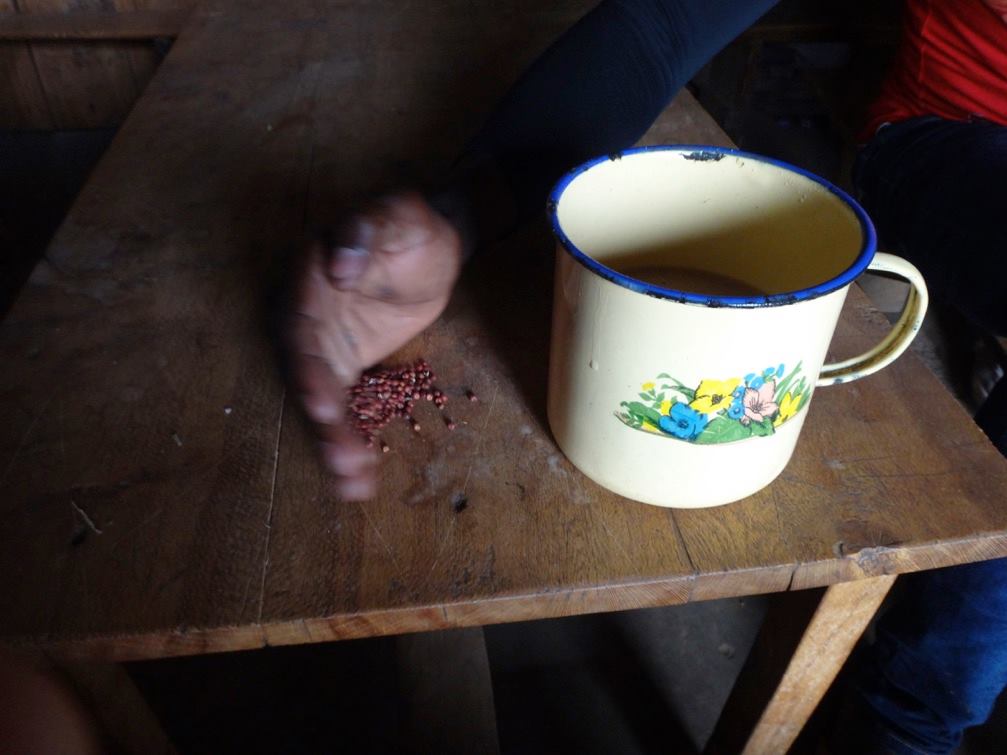

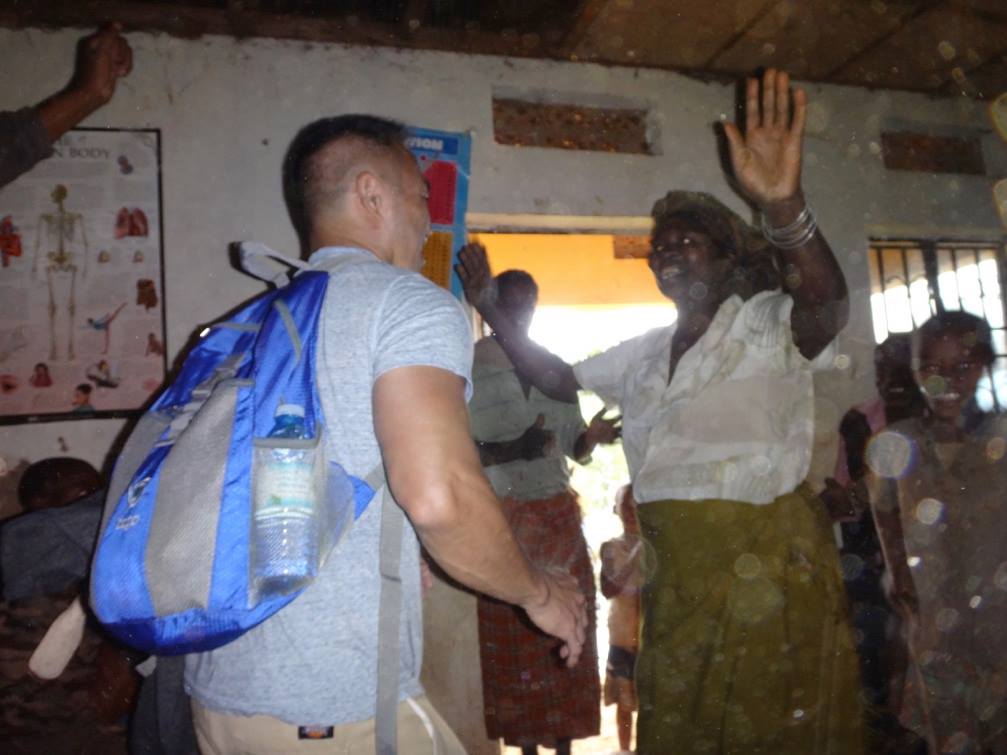



Punishment Island
Akampene Island, AKA Punishment Island, is a small, desolate patch of grass in the middle of this otherwise peaceful lake. Teenage women who became pregnant outside of wedlock were brought to this island and tied to a tree. I wondered if it was the single tree that still stood on this tiny island.
Until less than a century ago, young women who became pregnant before marriage were seen as bringing shame on their families and were often either thrown off of a cliff or brought to this island. Swimming was not a common skill amongst Ugandans, so they could choose to starve to death or attempt swimming and often drown. The lucky ones were picked up by men who could not afford (or did not want to pay) the dowry. Read the story of one such survivor, Mauda Kyitaragabirwe, here.
Bwana Island
Life has gotten much better for women in Uganda. One example is the school on Bwana Island, whose student population is 60% female! This former leper colony is now a secondary school, with the buildings formerly used to house people with leprosy now serving as dormitories for the students.
Bwana Island is the largest in the lake, and the school covers much of its land mass. The school itself reminded me of those you’d see in Little House on the Prairie, except this classroom contained several computers. There was also a science lab and a rather large, beautiful church. One of the goals of this school is to educate women and normalize the struggles unique to the fairer sex. We saw a sign that read “Menstruation is good and it is normal.”
The bathroom was another story. I am not a bathroom snob. If another human can use a bathroom, then why can’t I? I have hovered, squatted, and stood in many different types of toilets. I really had to go, and I didn’t feel comfortable squatting behind a tree where kids went to school. So, the rather inebriated grounds keeper (he must’ve had his morning amamera) led me to the bathroom.
As I approached the tiny dilapidated outhouse, I could hear a buzzing sound. I opened the rickety door and could barely see a few rotting boards placed over a large hole in the ground. A swarm of fat, iridescent flies guarded the potty. Spider webs provided wallpaper. I imagined stepping onto the boards and falling into the pit of poo… so, I slunk around back and squatted behind the shack. I felt terrible for not using it, and terrible for the kids that had to.
Kyahugye Island
Kyahugye Island is the second largest on Lake Bunyonyi and is the only island with wildlife. The wildlife was brought here from Lake Mburo National Park as sort of a zoo. You can actually stay on this island at Lake Bunyonyi Eco Resort!
Bacuranuka Island
This is known as the “upside down island.” Legend has it that an old woman came upon some men brewing Bushara and asked for a drink. They rudely refused her and took her to the mainland. She cursed the island and caused it to flip upside-down, drowning those rude, dunk dudes.
Batwa Visit- Meet a Pygmy Tribe
Lastly, you can arrange to visit a pygmy tribe that lives on a hill at one end of the lake. We didn’t do this, as the tribe wasn’t accepting visitors that day for some reason. Check out how to set this up here.
I definitely recommend including Lake Bunyonyi in your Ugandan itinerary! Come back next time for stories from our gorilla trek in Bwindi Impenetrable Forest!

1 thought on “Uganda- The Pearl of Africa Part 2- Lake Bunyonyi”
I really enjoyed reading about your trip.
You did a great job. I love you,
Willie Von